Intel 10th gen notebooks have been around in stores for a month or two now, and Lenovo are also updating their lineup of performance ThinkPads with the 2020-generation hardware, with retail availability scheduled for July 2020.
The ThinkPad x1 Extreme and ThinkPad P1, both at their 3rd generation now, are among the lineups that benefit from the specs-bump and a few other generation tweaks, alongside the workstation ThinkPad P models that we’ll address in a separate article.
I’d reckon many of you would be interested in the updated Thinkpad X1 Extreme 3rd gen, given the popularity of the 2018 and 2019 models, which we’ve reviewed in the past here on the site. This the “consumer” oriented 15-inch ultraportable, now based on up to Core i9 Intel th gen processors and Nvidia GTX 1650Ti, with a handful of storage, memory, and screen options.
Update: If interested, our recent review of the latest ThinkPad X1 Extreme series is available here.
The Thinkpad P1, on the other hand, is the workstation-grade ultraportable, built on the same chassis as the X1E, but with Nvidia Quadro graphics and Studio optimized drivers, as well as options for Xeon processors and ECC memory at the very top.
Here’s a quick specs-sheet comparison of the two.
| Lenovo ThinkPad X1 Extreme Gen 3 (2020) | Lenovo ThinkPad P1 Gen 3 (2020) | |
| Screen | 15.6 inch, FHD 1920 x 1080 px, IPS, non-touch, matte, 300-nits 15.6 inch, FHD 1920 x 1080 px, IPS, non-touch, matte, 500-nits (HDR 400) 15.6 inch, 4K 3840 x 2160 px, IPS, non-touch, matte, 600-nits (HDR 400) 15.6 inch, 4K 3840 x 2160 px, OLED, touch, glossy, 500-nits (HDR 500) |
|
| Processor | up to 10th gen Intel Coffee Lake Core i9, 8C/16T | up to 10th gen Intel Coffee Lake Core i9 or Xeon, 8C/16T |
| Video | Intel UHD + Nvidia GTX 1650Ti 4 GB GDDR6 (Max-Q 35W) | Intel UHD + up to Nvidia Quadro T2000 4 GB GDDR5 (Max-Q 35W) |
| Memory | up to 64 GB DDR4 2933 MHz (2x DIMMs), non-ECC | up to 64 GB DDR4 2933 MHz (2x DIMMs), optional ECC memory |
| Storage | 2x M.2 PCIe x4 storage, up to 4 TB; RAID 0/1 support | |
| Connectivity | Intel WiFi 6 AX, LAN (with adapter), optional CAT 16 WWAN1, NFC | |
| Ports | 2x USB-A 3.1, 2x USB-C Thunderbolt 3, HDMI, SD card or WWAN, mic/earphone, network extension port, Kensington Lock, optional SmartCard reader | |
| Battery | 80 Wh 4-cell Li-Ion, 135 W power adapter | |
| Size | 362 mm or 14.2” (w) x 246 mm or 9.7 (d) x 18.4 mm or .72” (h) – without touch 362 mm or 14.2” (w) x 246 mm or 9.7 (d) x 18.7 mm or .74” (h) – with touch |
|
| Weight | from 3.76 lbs (1.7 kg) + 0.99 lbs (450 g) power brick, US model | |
| Extras | Backlit keyboard, fingerprint sensor (standalone), hybrid HD/IR camera, stereo speakers, self-healing BIOS, available in all-Black or Black with Woven Carbon Fiber top | |
On a first look, not much has changed from the 2019 models. The P1 remains the professional-oriented product, with Quadro Graphics and Studio drivers, while the X1 Extreme gets RTX 1650Ti graphics and GeForce drivers.
There are also options for Xeon processors and ECC memory on the P1, but those are only available on the higher-tier configurations and cater to a small niche of potential buyers, who might arguably get better value with the full-size ThinkPad P15 models, if willing to sacrifice in portability.
At the same time, the X1 Extreme tops at 8Core i9 processors, although you should look into detailed reviews for more details on how these power-hungry Intel processors are going to perform in this sort of a smaller chassis, given that we’ve experienced minor CPU/GPU throttling on the 2019 i7-9750H configuration.
Lenovo does mention what they call an “Ultra Performance Mode” for these laptops, which is supposed to allow full control over the various performance settings. Not sure what this means exactly, but better CPU/GPU/fan control through software is something I’ve always wanted on ThinkPads, and I’m looking forward to testing it in real use.
So, what else has changed on these 2020 models:
- 10th gen hardware support on both lineups, which as you might know by now is a revised 14nm+++ platform capable of higher single and multi-threaded clocks, but only if supplied with enough power and properly cooled. We’re going to further dwell into this matter once we get to review these, but I’d expect the best value to still lie in the i7 CPU options in this sort of a chassis.
- slightly faster DDR4 memory support with Comet Lake, at 2999 MHz, from 2666 MHz before.
- revised GTX 1650Ti graphics on the ThinkPad X1E, still in the Max-Q implementation. Again, something we’ll look into in the review, but don’t expect more than FHD gaming at medium settings here, as well as up to 10 percent performance gains over the 2019 model. The ThinkPad X1E is not a gaming laptop.
- a new Ultra Performance Mode, exclusive to ThinkPad X1E and P lineups, which is supposed to allow improved control over the performance settings – looking forward to testing this in practice.
- a new 4K matte 600-nits screen option available on both models, which adds up to the previously existing FHD IPS and UHD OLED options.
- WiFi 6 and optional CAT16 WWAN mobile connectivity – this replaces the card-reader when opted for.
- improved anti-smudge coating and upgraded speakers – these are only mentioned in the fine print, but without any further details. I’d reckon Lenovo implemented slightly larger and more powerful speaker chambers, and they still fire on the belly.
I’m happy to see improved speakers and included LTE connectivity, these add up to what were already mature products that now address most of our complaints with the maiden gen1 Thinkpad X1E. The thermal design hasn’t physically improved over the generations, though, and there’s still no FHD touch option, which might still push some potential buyers away.
Overall, though, these 3rd gen 2020 ThinkPad X1E and P1 are both only incremental updates of what is now a 3-year old design. I’m not complaining, I’m still a fan of this sort of classic looks, but the competition has innovated in the meantime, and devices such as the MacBook Pro 16 and the new Dell XPS 15/17 models are surely going to eat into these ThinkPads’ desirability and market share in the 2k+ segment. What do you think?
Oh, both these lineups are scheduled for July, with the X1 Extreme rd gen starting at $1749, and the P1 rd gen at around $2000.

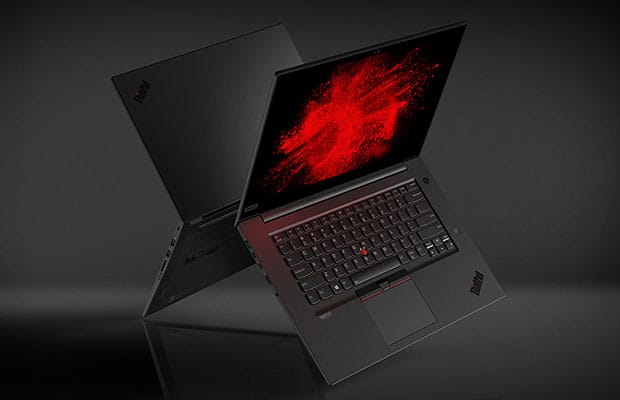

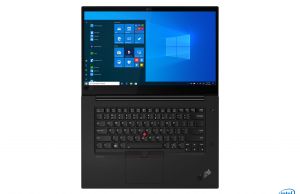
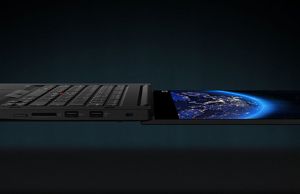
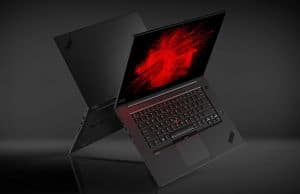




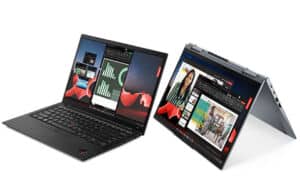



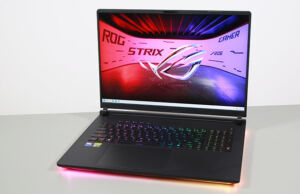



bittricks
June 21, 2020 at 7:16 am
If you want a better trackpad and the option of multiple drives, then go with the X1E G3.
If you want better thermals, a much more robust case and significantly longer battery life, then go with the XPS 15.
If you can afford $4,500+ USD without blinking an eye, then go with a top-tier 16" MacBook Pro.
If you hit the laptop lottery, then the XPS 15 is the best overall value for the money.
Joe
March 11, 2023 at 11:49 am
Long time user of Thinkpads, went to XPS 15 mostly because of the higher quality screen back then. It took a bit of time to get used to keyboard, can't match thinkpads. Sorely missing dedicated page up/down keys. But the worst bit, constant wifi issues that seem to be design related, plenty of users complaining about that. Back to thinkpads, I'm not going to test my sanity again.
Bittricks
June 23, 2020 at 1:27 am
I just found out today that Lenovo and Fedora Project are collaborating to bring Fedora 32 Workstation to Thinkpads – and the X1E is one of the models. Purportedly they're trying to eliminate the usual problems such as Secure Boot and Nvidia driver issues. Now I don't know how that is possible when Nvidia refuses to release a signed Linux driver. In other words you'll have to disable Secure Boot (which Fedora supports) and then install the proprietary unsigned Nvidia driver and leave Secure Boot permanently off.
Anyway, Fedora or Lenovo are saying Fedora 32 Workstation will be orderable on X1E G2's this summer. Supposedly by the time G3 roll's around, the end user will be able to pick-and-choose the Fedora OS right within the order customization page. Forgive me if I'm skeptical because from my own experience I know how Dell handles their Ubuntu XPS 13s and there is no reason whatsoever to believe Lenovo will do any better. Furthermore, they don't say is if the distro will be backwards compatible with G2's shipped earlier this year or at the end of last year.
Predictable that they leave out the stuff that end users really need to know to make informed choices. Instead they make hyped statements with critical omissions to further an agenda that has failed countless times in the past with other vendors.
If it ends up being like everything that came before it… big on the promises and hopium, but half-assed on the execution. That's the Linux to Windows device story.
Frank
October 13, 2020 at 11:46 am
Any idea how to completely silence the fans of the P1 Gen3 when plugged in? Even at no load at all, the fans are constantly running. Only when I pull the power plug the P1 turns quiet. What I have tried so far: adjusting the power settings in BIOS to balanced when plugged in, setting the cooling policy in Win10 to passive when plugged in and setting the Lenovo Intelligent Cooling to quiet mode. But even with all three measures, the fans keep on running.
Andrei Girbea
October 13, 2020 at 12:05 pm
I don't have a clear answer to your question, but I can say that I'm still using TPFanControl on my older ThinkPad for that exact purpose. However, that's not an official app so you should read about it and any potential risks.
Shabbeer
November 4, 2020 at 1:17 pm
Would you be reviewing the X1 Extreme Gen3 anytime soon? Maybe the FHD model?
Andrei Girbea
November 4, 2020 at 2:03 pm
Not planned for the moment.
bittricks
November 25, 2023 at 6:24 am
I know this article is old, but Lenovo is running the best deal that I have seen for the P1 Gen 6 workstation (since the X1 Extreme was removed from the product line).
For those that need a bit more processing power/capability in a 15-inch platform:
$1709 for a very well spec'd P1 Gen 6: i7 13700H, 32 GB RAM, 1 TB SSD, RTX A1000, 300 nits FHD panel.
Dell XPS 15 with same specs but RTX4050 and 500 nits FHD panel is $1699.
NOTE: The P1 with essentially the same specs will perform better in CPU intensive tasks due to the better cooling and CPU optimization. If a 5% additional capability is needed, then this P1 Doorbuster package is worth considering.
Historically, Lenovo P1/X1 Extreme was always $300 to $400 more costly than Dell XPS 15 when similarly spec'd.
Lenovo checkout process is now a bit bizarre with some bizarro service options… all intended to increase profit with very questionable benefit to the consumer.